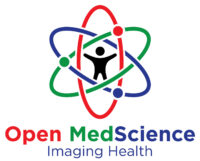Summary: Advancements in medical imaging technologies have revolutionised early disease detection, enabling clinicians to identify conditions such as cancer and cardiovascular disease at a stage when they are far more treatable. This article looks into the role of preventative imaging in modern medicine, particularly in screening programmes for diseases like breast cancer and abdominal aortic aneurysms (AAA). It examines the science, benefits, and challenges of early imaging, its influence on public health strategies, and its potential to reshape how we manage health across populations.
Keywords: Preventative imaging, early detection, disease screening, breast cancer, aortic aneurysm, medical imaging.
The Case for Prevention over Cure
The age-old maxim that prevention is better than cure has found strong support in today’s healthcare systems. Early detection of disease through imaging is now recognised as a powerful tool in preventing unnecessary suffering, reducing mortality, and improving long-term outcomes. With the global burden of chronic diseases on the rise, strategies that can identify pathology before symptoms appear are not only cost-effective but can dramatically alter a person’s prognosis. Imaging, particularly in the context of structured screening programmes, has taken centre stage in this preventative revolution.
The Science Behind Preventative Imaging
Preventative imaging refers to the use of medical imaging technologies—such as X-rays, ultrasound, MRI, CT scans, and mammography—to detect disease at an early, often pre-symptomatic stage. Unlike diagnostic imaging, which investigates specific complaints or symptoms, preventative imaging is typically conducted as part of a systematic screening effort targeting at-risk groups.
These imaging techniques work by visualising internal body structures in great detail. In breast cancer screening, for example, mammography detects small tumours long before they become palpable. In AAA screening, ultrasound is used to identify dangerous enlargements in the abdominal aorta that may otherwise rupture without warning.
The real strength of imaging lies in its ability to reveal anatomical and, increasingly, physiological abnormalities before they cause significant harm. With the development of more sensitive technologies, such as molecular imaging and artificial intelligence (AI)-enhanced platforms, the horizon for early detection is expanding rapidly.
Breast Cancer Screening: A Benchmark for Success
Breast cancer screening is perhaps the most well-established and widely recognised use of preventative imaging. Introduced in many countries during the late 20th century, mammography screening has become a core component of women’s healthcare.
In the UK, the NHS Breast Screening Programme invites women aged 50 to 70 for a mammogram every three years. The impact of this programme has been substantial. Numerous studies have shown that regular screening significantly reduces breast cancer mortality, with early detection increasing the chances of successful treatment and allowing for less aggressive interventions.
Screening mammography can detect breast cancers that are too small to be felt and may not yet have spread. Detecting these lesions early means that patients often avoid more intensive therapies, such as chemotherapy, and experience a better quality of life post-treatment. The programme has also helped standardise imaging protocols and improved public awareness around breast health.
However, breast cancer screening is not without challenges. There is ongoing debate about overdiagnosis, where non-life-threatening cancers are identified and treated unnecessarily. There are also concerns about false positives, which can lead to anxiety and further invasive testing. Nevertheless, the overall consensus among experts is that the benefits outweigh the risks, particularly when screening is conducted with well-defined protocols and follow-up care.
Screening for Abdominal Aortic Aneurysm: A Quiet Life-Saver
An abdominal aortic aneurysm is a potentially lethal condition characterised by the weakening and bulging of the main artery that runs through the abdomen. If an aneurysm ruptures, it can cause catastrophic internal bleeding and death within minutes. Because AAAs develop silently and progress without symptoms, early detection is essential.
Ultrasound screening for AAAs is a simple, non-invasive procedure that can be life-saving. In the UK, the NHS AAA Screening Programme offers men a one-time screening at the age of 65, a group statistically at the highest risk for the condition. Those found to have small aneurysms are monitored regularly, while larger aneurysms may prompt surgical intervention before rupture becomes likely.
Evidence shows that this screening programme has significantly reduced mortality from AAA in the targeted population. It also exemplifies a key strength of preventive imaging: intervening before a health crisis arises, often at a relatively low cost and with high reliability.
Like breast cancer screening, AAA screening must be carefully managed to avoid overtreatment. Nonetheless, it is a clear example of how imaging can be used effectively to avert fatal outcomes and improve public health.
Imaging in Broader Disease Prevention
While breast cancer and AAA screenings are among the best-established uses of preventative imaging, a broader range of conditions is increasingly being targeted. Colon cancer screening with CT colonography, lung cancer screening with low-dose CT in smokers, and cardiovascular risk assessment with coronary calcium scoring are all growing in use and acceptance.
In cardiovascular disease, imaging modalities such as cardiac MRI and CT angiography can detect early atherosclerosis or structural abnormalities in the heart, allowing for timely intervention with lifestyle changes or medication. For example, calcium scoring enables clinicians to stratify risk in asymptomatic patients, influencing management decisions and potentially avoiding heart attacks or strokes.
Similarly, neuroimaging is being explored as a tool for identifying early signs of neurodegenerative conditions such as Alzheimer’s disease. While this area remains largely investigational, it holds considerable promise for future preventative strategies.
Advances in whole-body MRI and AI-driven imaging analytics are opening the door to more comprehensive health scans that may one day be used routinely to screen for a wide range of diseases in a single session. Although the ethical and logistical implications of such broad screening approaches are still under debate, the technology is moving rapidly.
Ethical, Economic, and Practical Considerations
Preventative imaging, like any medical intervention, raises important ethical and economic questions. A central concern is the balance between benefits and harms. While early detection can save lives, unnecessary imaging or treatment can lead to harm, patient anxiety, or wasted healthcare resources.
Another issue is equity. Screening programmes must be designed to reach all segments of the population fairly. There is often a disparity in access to preventative imaging services based on socioeconomic status, geographical location, and ethnicity. Addressing these inequalities is crucial if the full benefits of early detection are to be realised.
Economic evaluations of screening programmes are complex. While upfront costs can be high, long-term savings from avoided hospital admissions, surgeries, and lost productivity are considerable. Governments and healthcare systems must carefully weigh these factors when deciding which imaging strategies to fund and implement.
From a practical standpoint, quality control is essential. Imaging equipment must be maintained to high standards, and radiologists must be well-trained to accurately interpret results. In recent years, AI tools have begun to assist radiologists by flagging suspicious findings, increasing efficiency and reducing oversight errors.
The Future of Early Detection Through Imaging
The future of preventative imaging is both promising and challenging. Personalised medicine is likely to play a growing role, with imaging tailored to individual risk profiles based on genetics, lifestyle, and existing health data. As data integration improves, screening can become more targeted, efficient, and predictive.
Technology will also shape the future. AI is expected to enhance image analysis, identify patterns invisible to the human eye, and streamline workflows. Portable imaging devices may bring screening to remote or underserved areas, increasing global access.
Yet, to fully realise the potential of early detection, there needs to be a cultural shift. Preventative health must be seen not just as a government policy but as a personal priority. Education, awareness, and trust in medical services are essential to encourage participation in screening programmes.
Ongoing research will continue to refine which populations benefit most from which types of imaging. As our understanding of disease pathways deepens, new imaging biomarkers and modalities will emerge, further improving our ability to prevent illness before it starts.
Conclusion
Early disease detection through preventative imaging has already saved countless lives and continues to reshape modern healthcare. From established programmes like breast cancer and AAA screening to emerging applications in cardiovascular and neurological diseases, the role of imaging is expanding with technological and scientific advances.
Challenges remain in ensuring that these services are used judiciously, equitably, and effectively. However, the core message is clear: identifying disease before it progresses offers significant benefits for both individuals and society. As we move further into an era of personalised and proactive care, preventative imaging stands as one of the most powerful tools at our disposal.
By shifting the focus from treating illness to maintaining health, medical imaging is helping healthcare providers see further ahead—and giving patients a better chance at a longer, healthier life.
Disclaimer
The information presented in this article is intended for general educational and informational purposes only. It is not a substitute for professional medical advice, diagnosis, or treatment. Readers should consult their own healthcare providers for guidance specific to their individual health circumstances. While efforts have been made to ensure the accuracy of the content at the time of publication, Open Medscience does not guarantee its completeness or relevance to all readers. References to specific screening programmes or technologies do not constitute endorsements, and inclusion does not imply suitability for all individuals. Any decisions related to medical imaging or preventative screening should be made in consultation with a qualified medical professional.




